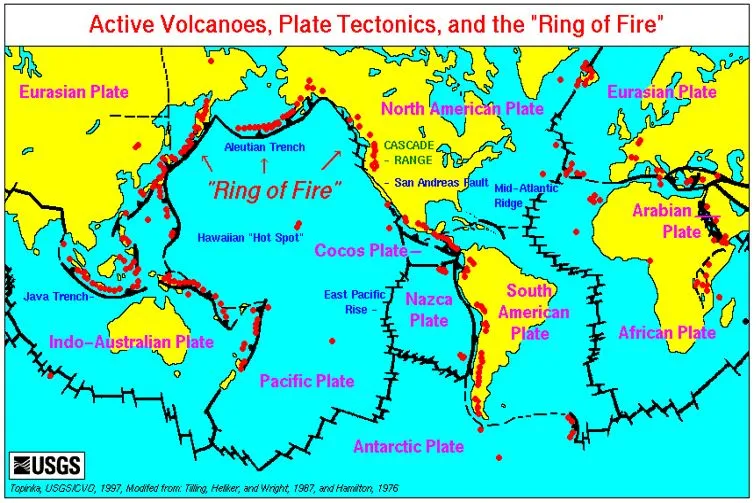

5th June 2025 (11 Topics)
Context
On June 2025, Mount Etna in Italy erupted, producing an enormous ash and gas column visible several kilometres into the sky. While visually dramatic, the eruption caused no injuries or significant disruption, prompting global scientific interest in its eruptive behaviour and geological implications.
Mount Etna Eruption: Understanding the Dynamics of Active Volcanism in Europe
Mount Etna
Geographic Location and Characteristics
- Located on the eastern coast of Sicily, Italy.
- Type: Active stratovolcano formed at the convergent boundary of the African and Eurasian plates.
- Elevation: ~3,357 meters (variable due to eruptions).
- UNESCO World Heritage Site since 2013.
- Historical activity traced back 500,000 years; documented eruptions for ~2,700 years.
- Features 5 summit craters and over 300 flank vents.
Type of Eruption:
- Disputed Classification:
- Strombolian:
- Caused by gas bubbles in magma.
- Results in moderate, rhythmic explosions.
- Typically ejects lava bombs and cinders a few hundred meters.
- Plinian (as per some volcanologists):
- Violent eruptions with ash columns reaching the stratosphere.
- Comparable to Mount Vesuvius (79 AD) or Pinatubo (1991).
- Column height and ash cloud behavior suggested Plinian characteristics.
- Strombolian:
Mechanism Behind the Eruption
- Gas Build-Up: Volcanic gases accumulated in magma chamber.
- Crater Collapse: Sudden release of pressure caused southeast crater to collapse.
- Eruption Dynamics: Expanding gas forced out lava, ash, and pyroclasts into the sky.
Impact Assessment
- Human Impact: No casualties or significant damage reported.
- Air Travel: Minimal disruption to flights; continuous monitoring helped.
- Environmental Impact: Potential for localized air pollution due to ash.
- Climate Concern: If aerosols reach stratosphere, could contribute to temporary cooling.
Disaster Preparedness
- Real-Time Monitoring by INGV (Italy’s National Institute of Geophysics and Volcanology).
- Use of satellite systems (Sentinel, MODIS) to track ash clouds.
- Emergency response protocols already established for Etna's high activity.
Strategic & Scientific Importance
- Research Significance:
- Useful for studying gas-driven vs. explosive eruptions.
- Helps understand tectonic-volcanic interactions in Mediterranean.
- Comparative Analysis:
- Offers contrasts with volcanoes in Pacific Ring of Fire, Andes, and Himalayan arc.
- Early Warning Models:
- Can be adapted for similar volcanoes in Indonesia, Japan, and Philippines.
Way Forward
- Scientific Research: Invest in multi-parameter models to distinguish eruption types early.
- International Cooperation: Engage with IVHHN and UNDRR for global volcanic risk reduction.
- Public Awareness: Continue to educate locals and travelers about volcanic hazards.
- Policy Lessons: Learn from Italy’s zoning and monitoring systems to apply in other hazard-prone zones like Andaman & Nicobar Islands.
VolcanoesAbout Volcanoes
Magma vs Lava
Types of Volcanoes (Based on Frequency)
Types of Volcanoes (Based on Nature of Eruption)
Global Distribution of Volcanoes
 |
PYQ:Mains
Prelims 1. Consider the following: (2024)
How many of the above are products of volcanic eruptions?
2. Which of the following phenomena might have influenced the evolution of organisms? (2011)
Select the correct answer using the codes given below:
|
More Articles

